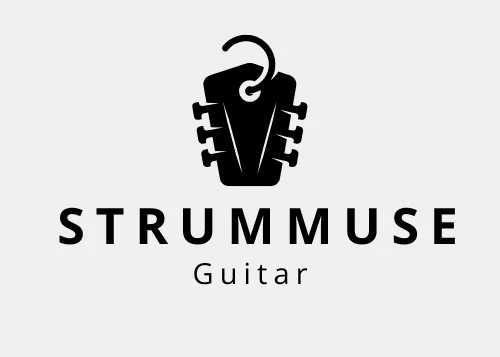Introduction & Concept
In Indian classical music, rhythm is not just a background beat—it’s a profound language of expression. The tabla, a traditional Indian percussion instrument, uses intricate patterns known as thekas to define rhythmic cycles (taals) that form the backbone of countless compositions. These taals, ranging from simple to wildly complex, are rich in structure and emotion.
Now imagine taking these beautiful rhythm cycles and applying them to the guitar—yes, rhythm on six strings. This fusion opens up a new world of expressive timing, rhythmic layering, and cross-cultural creativity. Whether you’re an acoustic fingerstyle guitarist, an electric improviser, or a nylon-stringed classical explorer, adapting tabla thekas can drastically improve your timing, groove, and even composition.
In this guide, we’ll explore how to:
- Understand basic tabla taals
- Translate theka patterns to guitar strumming/percussive techniques
- Practice rhythm cycles with chord progressions
- Fuse Indian rhythm with Western harmony for a unique sound
Let’s dive into the mesmerising interplay of tabla rhythm and guitar creativity.
What is a Theka?
A theka is the basic rhythmic pattern or phrase of a taal (rhythmic cycle) in Indian classical music. Each taal has a unique structure defined by the number of beats (matras) and accent patterns.
For example:
- Teentaal: 16 beats (4+4+4+4)
- Keharwa: 8 beats (4+4)
- Dadra: 6 beats (3+3)
- Rupak: 7 beats (3+2+2)
- Jhaptal: 10 beats (2+3+2+3)
These thekas are traditionally played on tabla using bols like “Dha”, “Tin”, “Na”, etc., but we’ll be translating their rhythm feel to guitar percussive patterns.
Why Adapt Tabla Rhythms on Guitar?
Because rhythm is universal, and tabla offers incredibly rich rhythmic languages that can:
- Enhance your sense of time and subdivision
- Improve your rhythmic phrasing in solos
- Add new grooves to your acoustic or electric playing
- Enrich Indian fusion or world music compositions
And most importantly, it breaks you out of the usual 4/4 strumming box.
How to Translate Thekas to Guitar
There are three main ways to adapt tabla rhythms to guitar:
- Percussive Strumming: Using palm hits (chh), slaps, muted strums, and ghost notes.
- Fingerstyle Percussion: Thumb slaps, body hits, and nail flicks.
- Chordal Rhythm Phrasing: Emphasising chords in time with taal accents.
Let’s now explore each of these with common taals.
Tabla Thekas on Guitar – Examples
Keharwa Taal (8 beats: 4 + 4)
Traditional Theka: Dha Ge Na Ti | Na Ka Dhi Na
Guitar Adaptation (Strumming):D D U x | D x U x
(D = down, U = up, x = mute/slap)
Chord Loop: G – Em
Feel: Think of a relaxed groove like Bollywood pop or a folk ballad.
Dadra Taal (6 beats: 3 + 3)
Theka: Dha Dhi Na | Dha Tu Na
Guitar Pattern:D x U | D x U
Chord Loop: Am – G
Feel: Intimate, romantic feel—perfect for ghazals or slow acoustic songs.
Teentaal (16 beats: 4 + 4 + 4 + 4)
Theka: Dha Dhin Dhin Dha | Dha Dhin Dhin Dha | Dha Tin Tin Ta | Ta Dhin Dhin Dha
Guitar Pattern (Advanced):
Use percussive slap technique:
D U x x | D x x x | U x U x | D U x x
Or break it into 4-bar loops:
Chord Loop: Dm – G – C – A7
Feel: Classical + Flamenco fusion.
Rupak Taal (7 beats: 3 + 2 + 2)
Theka: Tin Tin Na | Dhin Na | Dhin Na
Guitar Pattern:D D x | U x | D U
Chord Loop: Bm – F#
Feel: Jazzy, offbeat time—great for fingerstyle compositions.
Practice Tips
- Use a Metronome or Tabla App: Apps like iTablaPro or Tabla Studio let you hear the theka while you practice.
- Loop Small Sections: Don’t try 16-beat cycles all at once. Start with 4 or 8.
- Record and Review: Film your hands. Are your accents lining up with taal sam?
- Chant the Bol: Say “Dha Dhin Dhin Dha” as you play to internalise rhythm.
- Mix with Western Rhythms: Try playing Teentaal with reggae chords—get creative!
Sample Song Fusion Ideas
🎵 Keharwa-based Groove: Create an indie-folk track with 8-beat loops and Em – C – G – D progressions.
🎵 Teentaal Fingerstyle: Use percussive thumb taps and melody phrasing on top to craft ambient guitar ragas.
🎵 Dadra Love Ballad: Play 6-beat minor progressions with soft ghost notes for a ghazal-inspired feel.
🎵 Rupak + Flamenco: Mix odd-time strumming with rasgueado and phrygian modal riffs.
FAQs
Q1: Can beginners learn tabla rhythms on guitar?
Yes! Start with simple taals like Dadra or Keharwa and gradually move to Teentaal. Focus on groove, not speed.
Q2: Do I need to learn actual tabla bols?
Not necessarily, but learning the language (Dha, Tin, Na) will help you internalise rhythm.
Q3: Is this useful for electric guitarists?
Absolutely. Many prog and fusion players use Indian rhythmic phrasing in riffs and solos.
Q4: Can I combine Western and Indian rhythms?
Yes, that’s the beauty. Try alternating 4/4 funk grooves with 6-beat or 7-beat Indian cycles.
Q5: Any apps or resources to explore?
- iTablaPro (iOS)
- Tabla Studio
- Tal Vadyam (Android)
- Books: “The Tabla of Lucknow” or “Rhythms of the World”
Read More on StrumMuse
- Indian Classical Scales on Guitar – Raga Inspired Improvisation
- Integrating Indian Classical Scales into Guitar Improvisation
External Resources
Author’s Note
As a guitarist fascinated by Indian classical music, I found tabla rhythms both intimidating and enchanting. The process of learning to adapt theka patterns to the fretboard completely changed the way I play, compose, and even feel time. If you’re looking to deepen your connection with rhythm, especially beyond the Western 4/4 cycle, tabla will open your ears and hands to new grooves.
Start small, groove often, and don’t be afraid to experiment.
StrumMuse – Your trusted companion in learning guitar the fun and easy way.


2 thoughts on “Guitar Meets Tabla – Adapting Indian Tabla Rhythm for Guitar Practice”